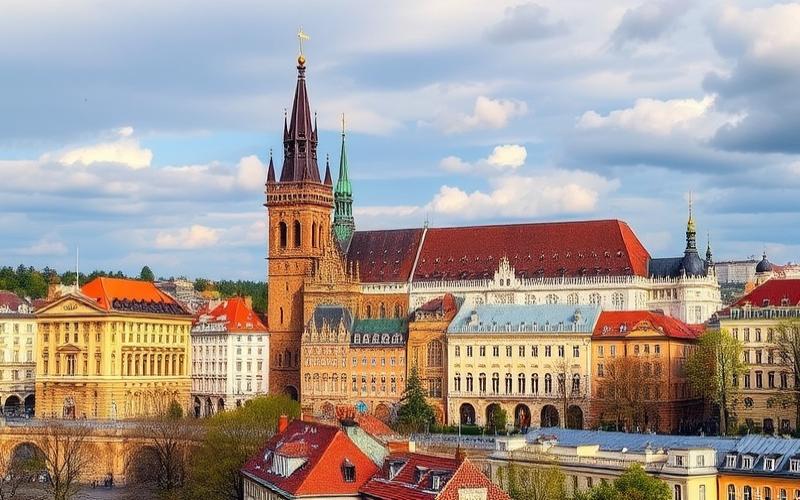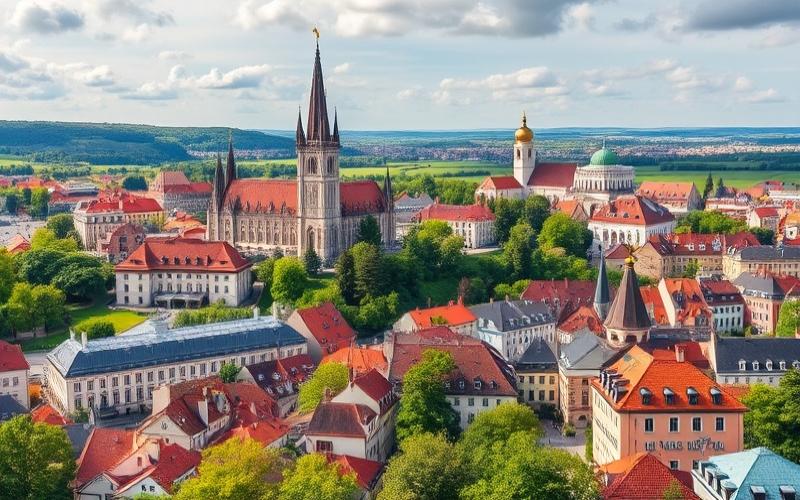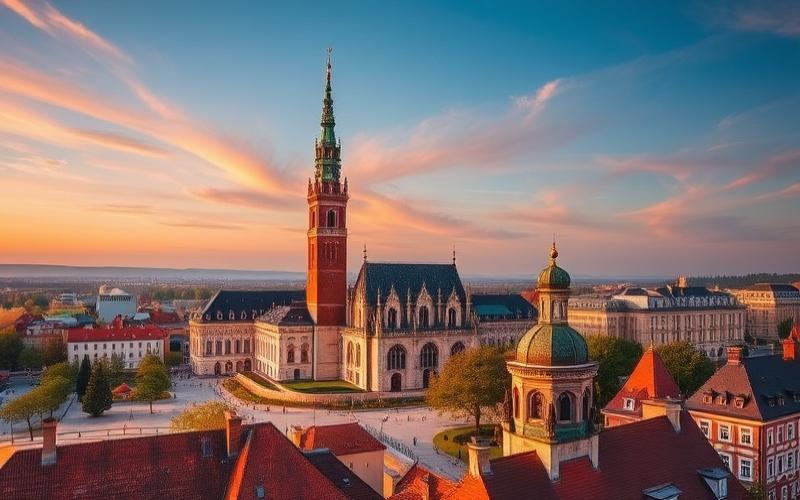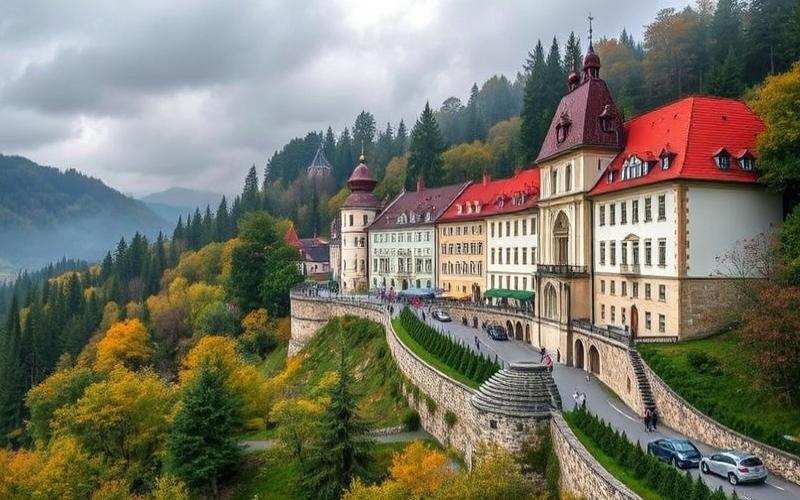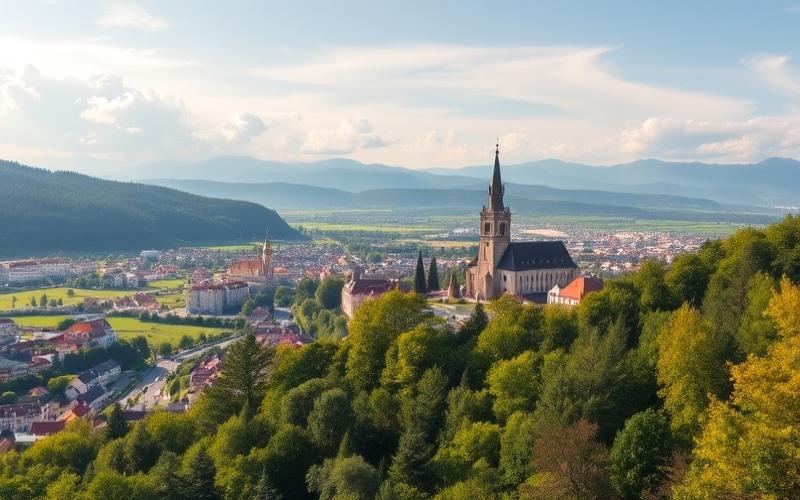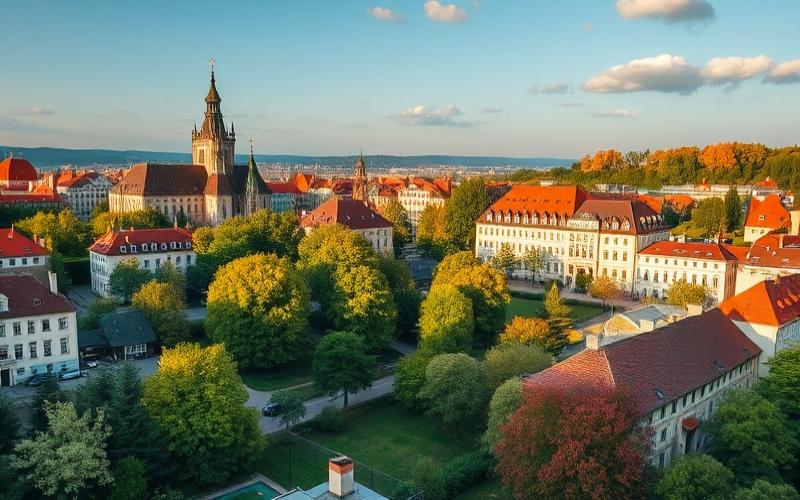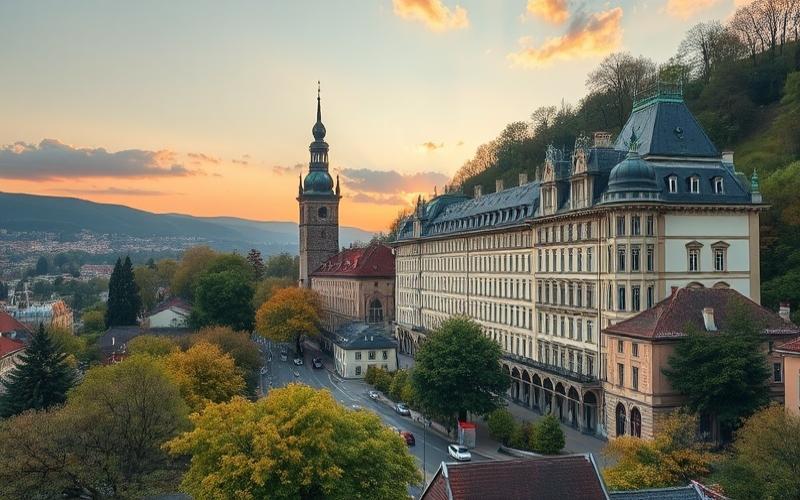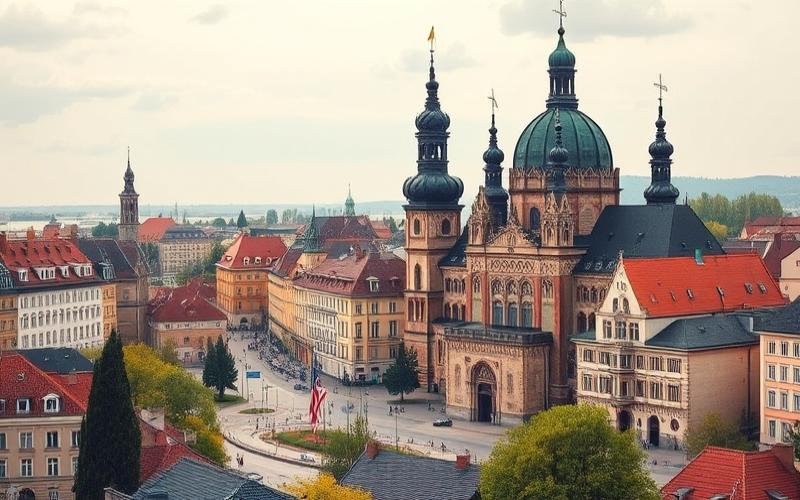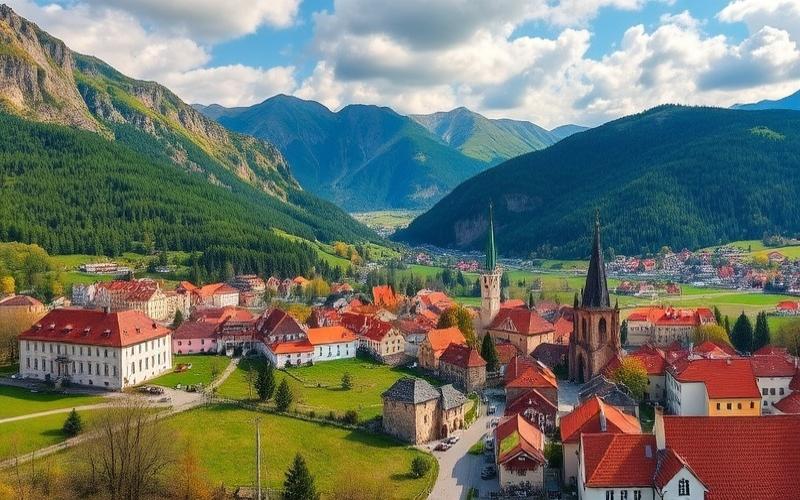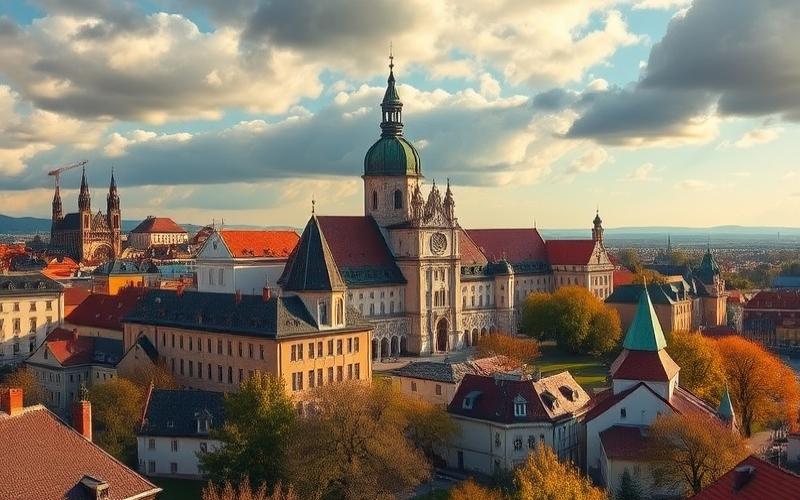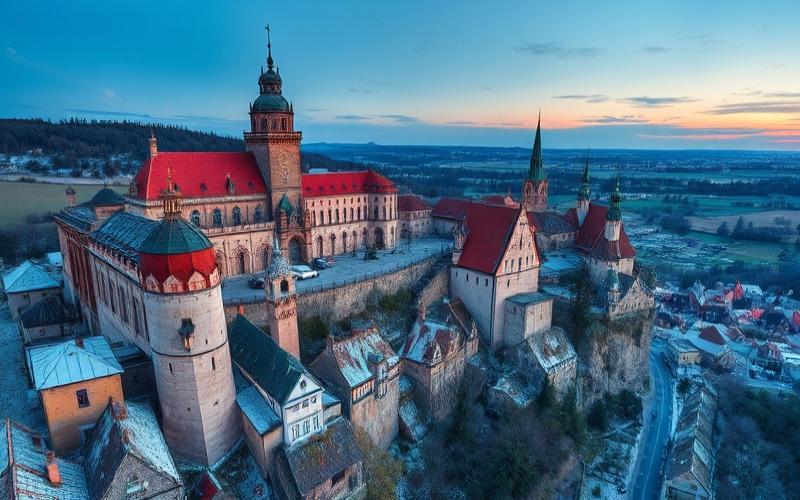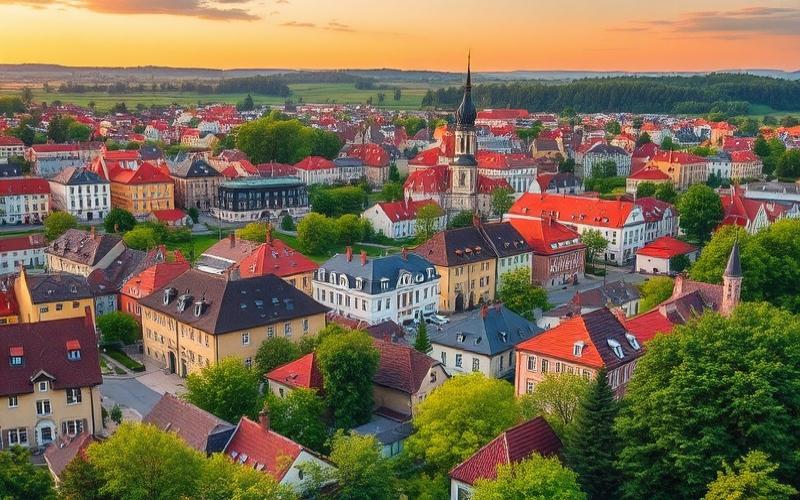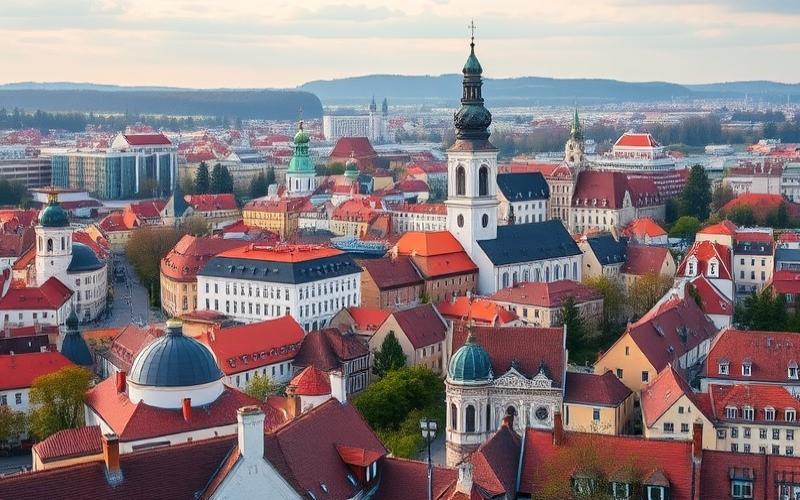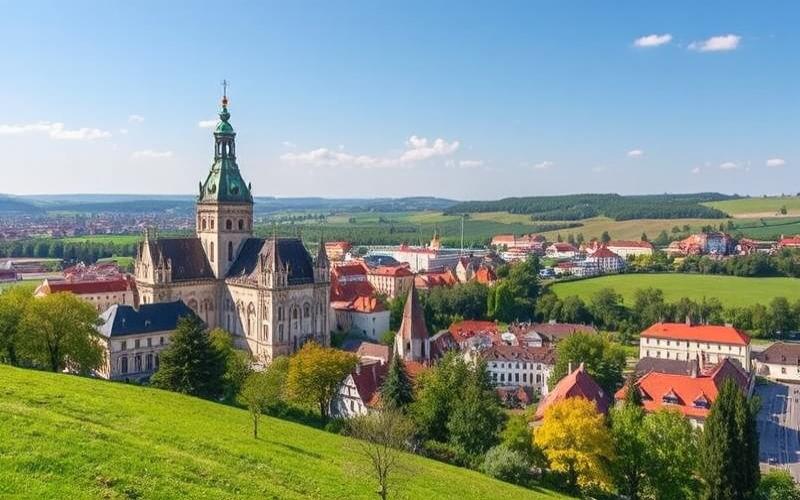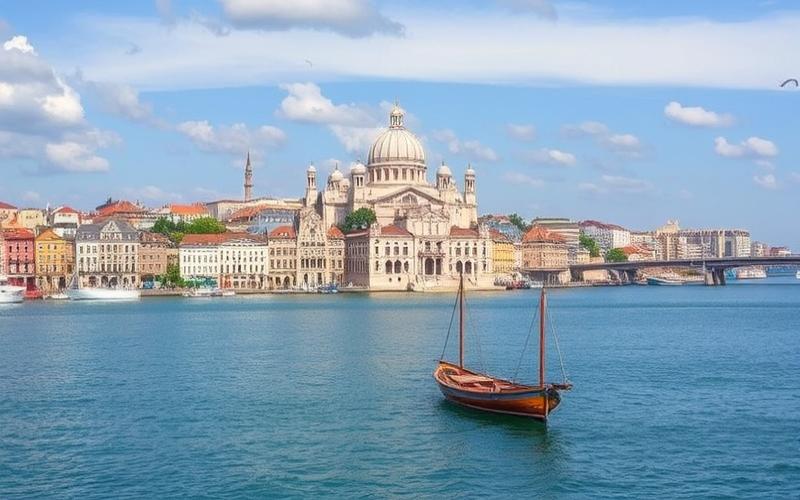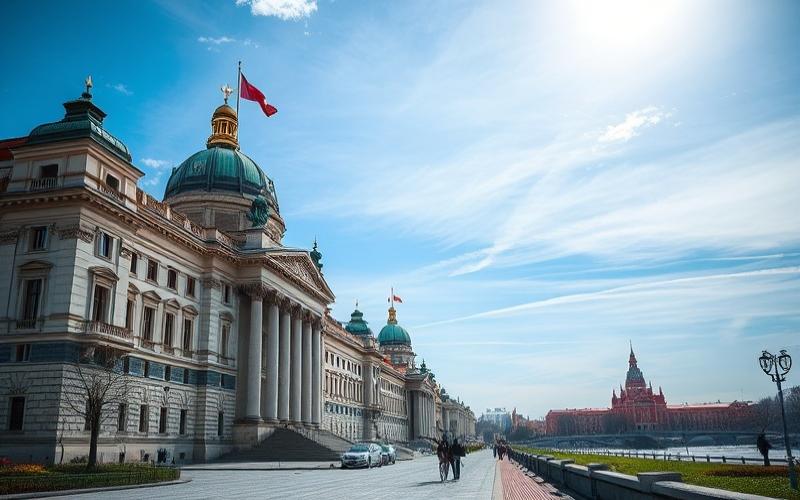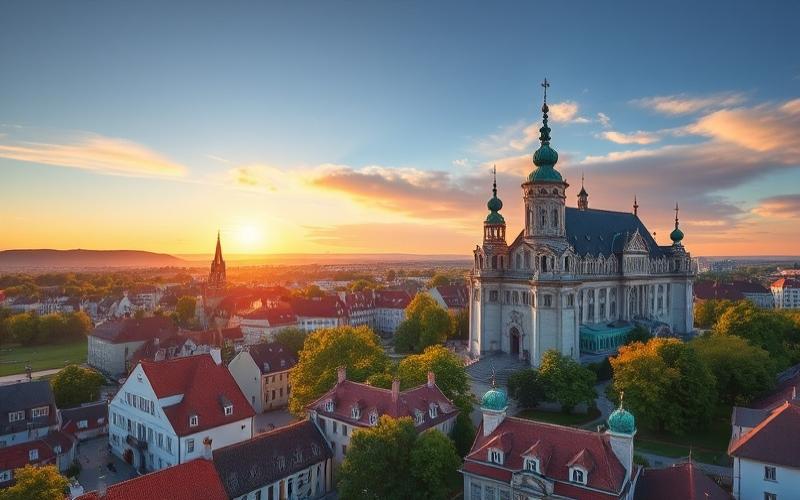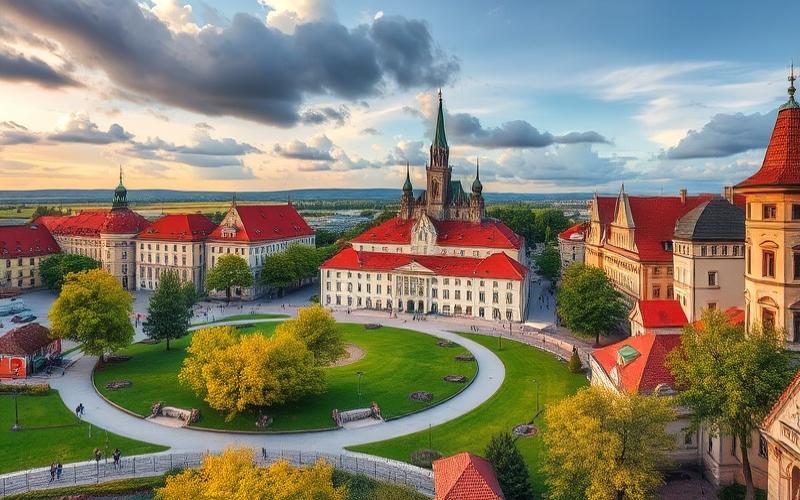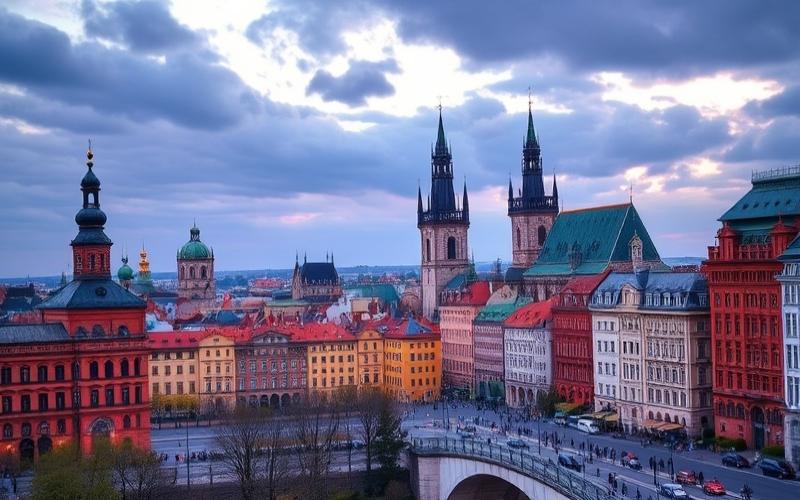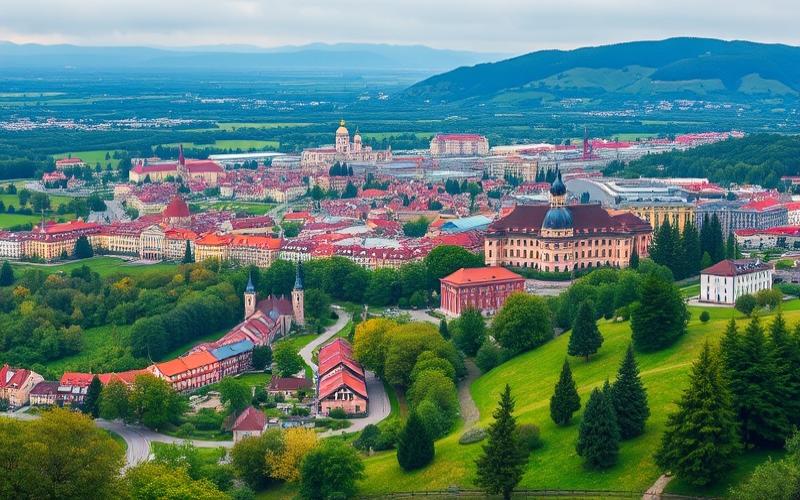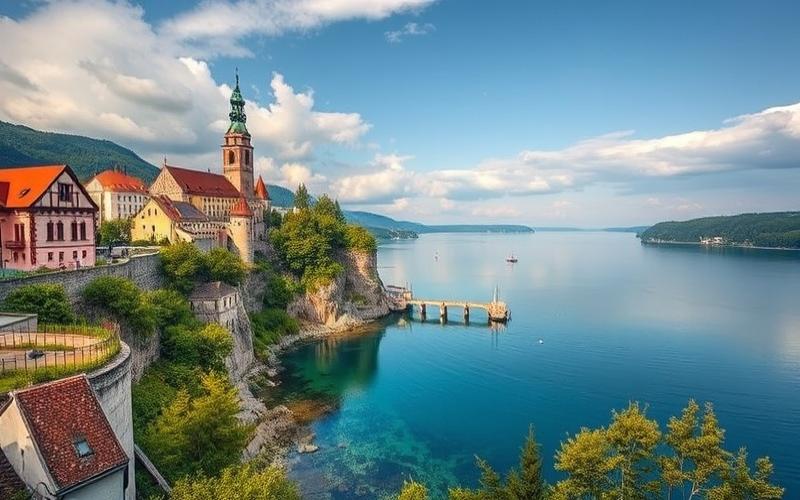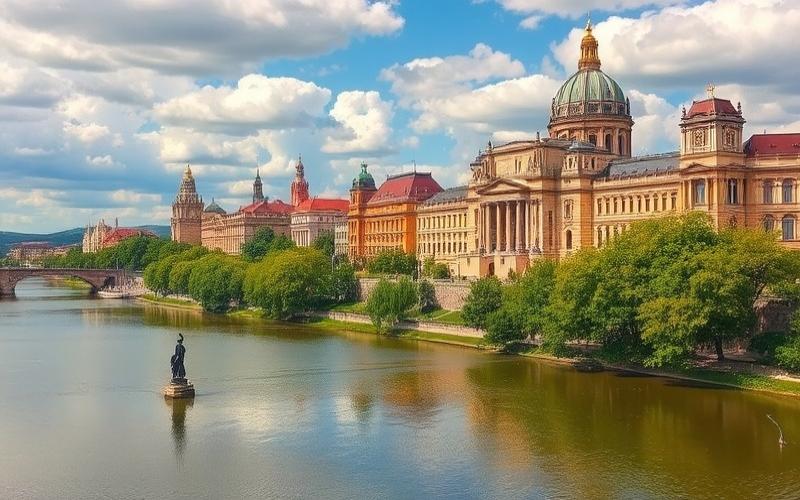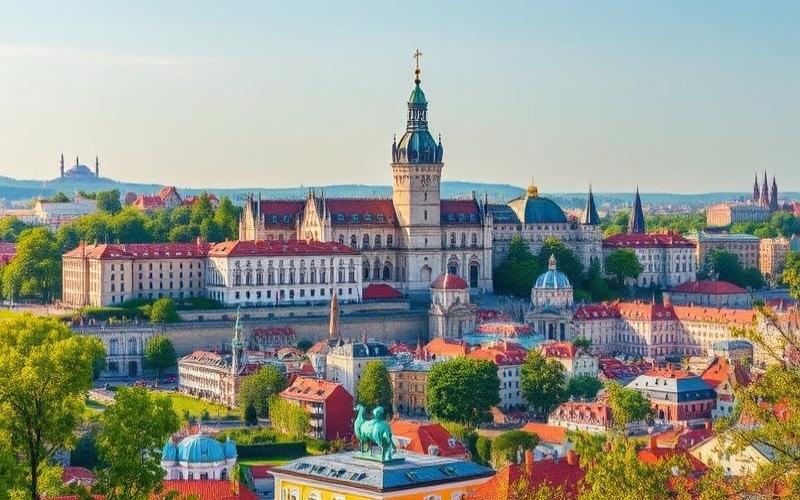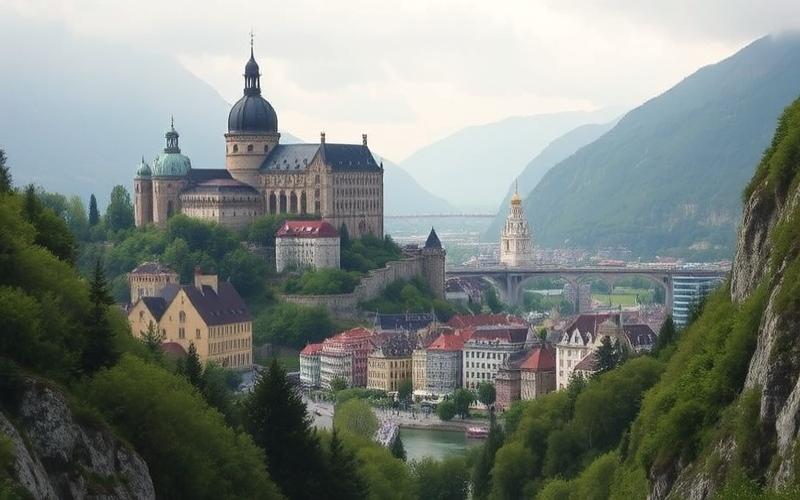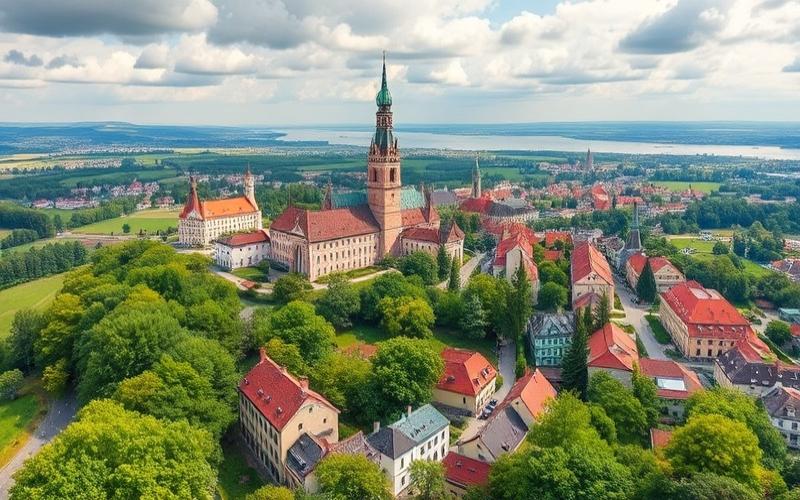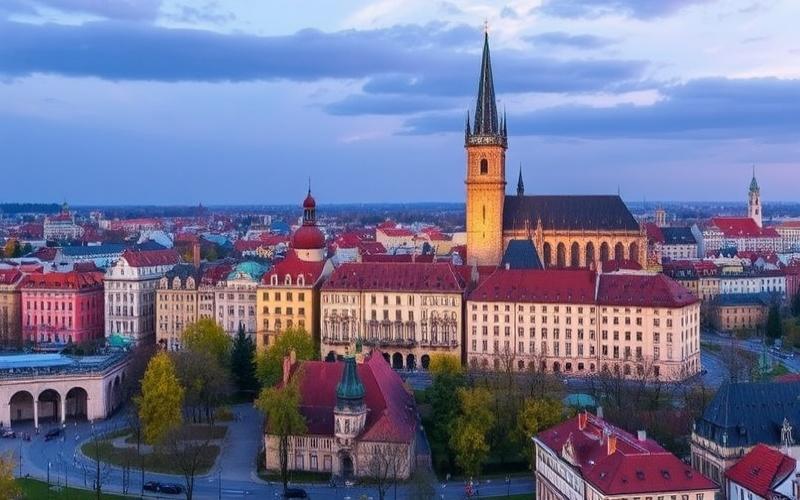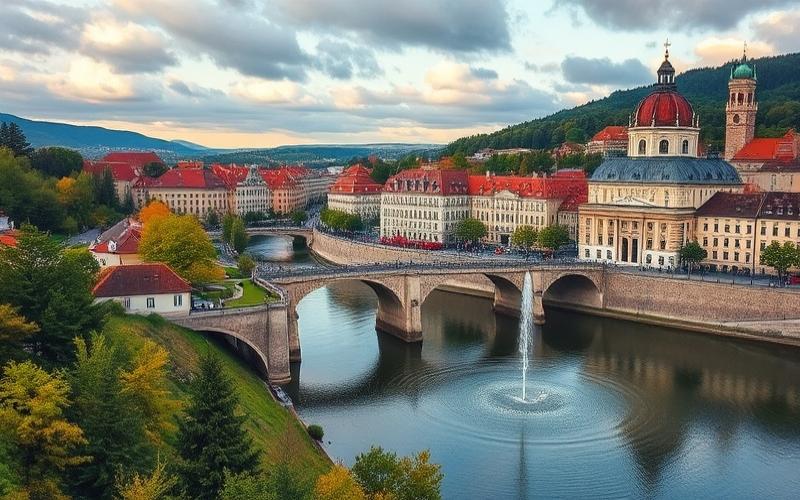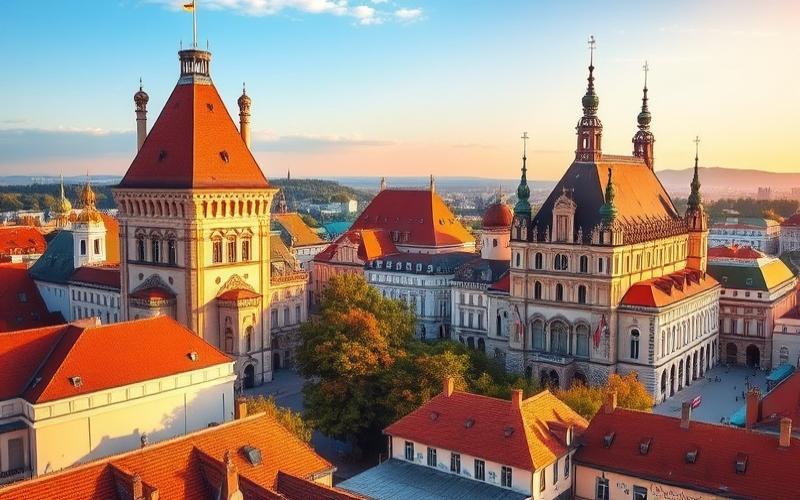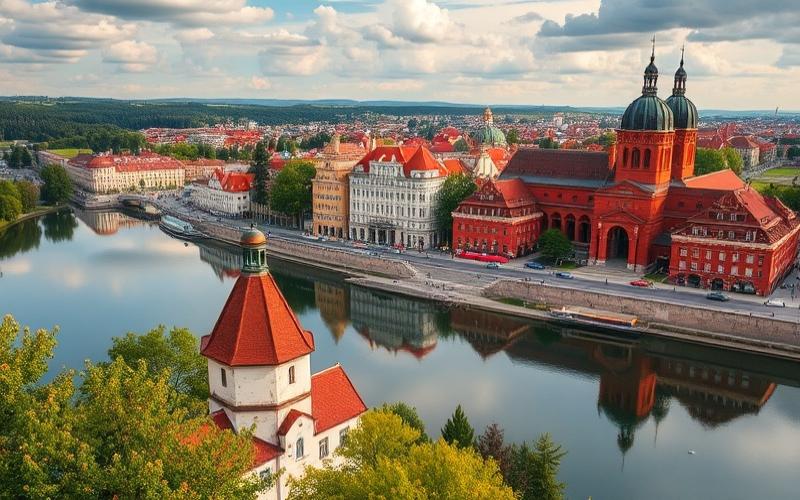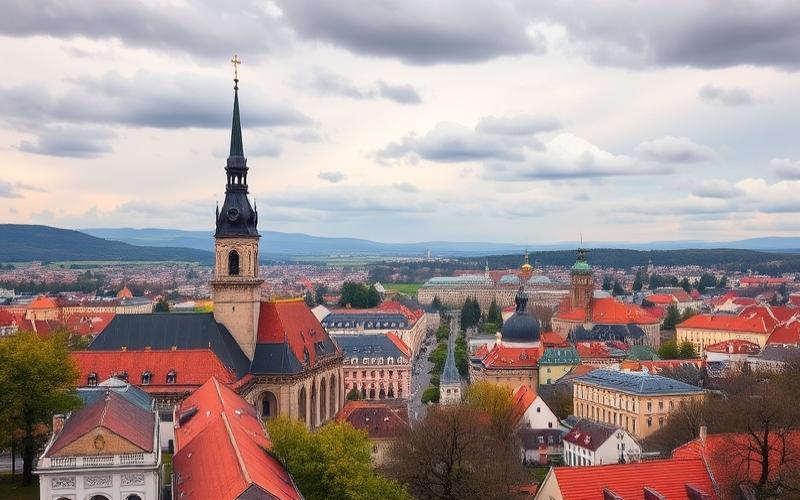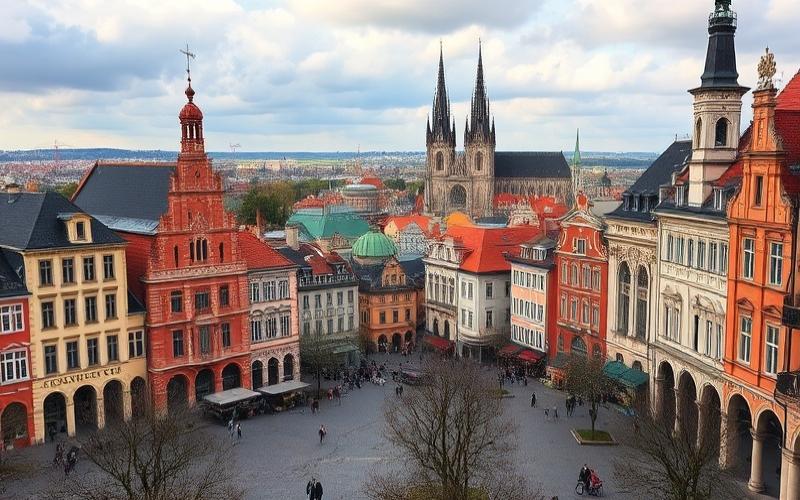
 Published on and written by Cyril Jarnias
Published on and written by Cyril Jarnias
Poland: A Nation Undergoing Economic and Social Transformation
Poland is seeing several of its cities emerge as future nerve centers of urban growth. As the appeal to international investors and businesses continues to grow, specific cities stand out due to their exceptionally high potential.
These urban areas, already bustling with activity, are poised to see their real estate prices and cost of living climb exponentially by 2030. This dynamic environment offers valuable opportunities while presenting serious challenges for local residents and newcomers.
Which Cities Are Affected?
So which locations in Poland might see real estate perception quickly become more than just an economic transaction before the decade ends?
Good to Know:
Real estate prices in Poland have seen significant increases in recent years, particularly in major cities like Warsaw, Krakow, and Wrocław.
Poland’s Most Promising Cities for Real Estate
The Polish real estate market shows sustained momentum, driven by solid economic growth, foreign investment flows, and favorable regulatory developments. The most promising cities combine population growth, infrastructure investments, and incentive-based public policies.
| City | Average Price per m² (Q3 2024) | Annual Price Growth (%) | Population (2024) | Key Projects & Investments |
| Warsaw | ~18,700 PLN | +7 to 9% | >1.85 million | New metro lines, green offices |
| Krakow | ~15,900 PLN | +6 to 8% | >800,000 | Tramway extension, innovation campuses |
| Wrocław | ~13,500 PLN | +5 to 7% | >680,000 | Technology park & sustainable mobility |
Key Economic and Demographic Factors
- GDP Growth: Poland forecasts a GDP growth rate around 3.4% for the coming years.
- Strong Urban Demand: Rural exodus continues toward major cities where the service sector is expanding.
- Foreign Direct Investment: Warsaw remains the primary hub for international headquarters.
- Modern Infrastructure: Municipal budgets prioritize green mobility and energy efficiency.
List of Structural Initiatives:
- Widespread implementation of local urban plans starting in 2026 to accelerate building permit issuance.
- New law strengthening real estate buyer protection to boost confidence in the residential sector.
- Local tax incentives for rental investments in certain strategic neighborhoods.
Real Estate Price Forecasts (Through 2030):
- Warsaw: Despite an expected slowdown around mid-2025 (+2-2.5% before stabilization), experts project cumulative growth between +12% and +20% by end of 2030 due to major urban projects and economic dynamism.
- Krakow: Expected increase between +10% and +17%, driven by tourist appeal and international academic positioning.
- Wrocław: Estimated growth between +10% and +16%, fueled by its transformation into a regional technology hub.
Key Points:
- The national slowdown expected from Q2 2025 should limit excessive speculation while maintaining reasonable growth momentum in these three flagship urban areas.
- National policy now focuses more on sustainability than rapid urban expansion.
Watch Out For:
- Moderate risk of real estate bubble if interest rates or inflation rise significantly;
- Partial dependence on European macroeconomic context;
- Increased opportunities due to lower property taxes compared to other European countries.
Visual Summary – Competitive Advantages
✔ Consistent demographic growth
✔ Modern or planned infrastructure
✔ Pro-investor public policies
✔ Growing international appealOutlook remains very favorable in these metropolitan areas that concentrate skilled workforce, innovation, and major new urban facilities.
Good to Know:
Wroclaw, Krakow, and Katowice are proving to be promising Polish cities for real estate, with palpable growth trends. Wroclaw is experiencing notable population growth, driven by a thriving local economy and booming tech companies, leading to approximately 10% annual real estate price increases. Krakow, thanks to its attractive cultural heritage and local initiatives promoting ecotourism and sustainability, also sees rising prices alongside steady tourist influx and massive investments in transport infrastructure. Katowice, once an industrial center, is undergoing transformation through significant government investments in renewable energy and digital transition, which could push real estate prices up by 8% by 2030. These cities additionally benefit from favorable tax policies for foreign investors, enhancing their appeal. Experts predict these trends will continue, supporting the idea that real estate in these areas offers interesting long-term return potential.
Poland’s Projected Growth Areas by 2030
Warsaw, Krakow, Wrocław, and Gdańsk rank among Poland’s urban areas with the strongest potential for economic and demographic growth by 2030. These metropolitan areas benefit from massive infrastructure investments, innovation-friendly public policies, and growing appeal to technology and creative industries.
| City | Population (est. 2025) | Projected Growth (%) | Main Growth Drivers | Real Estate Projections |
|---|---|---|---|---|
| Warsaw | ~3,000,000 (metro area) | +4 to +5%/year GDP | European funds, Smart City, modern transport | Continued residential price increases |
| Krakow | ~800,000 | +3 to +4%/year | ICT, cultural & academic tourism | Strong rental demand |
| Wrocław | ~700,000 | +3%/year | High-tech industry, logistics | Rapid new construction price increases |
| Gdańsk | ~600,000 | +2.8%/year | Port/logistics, tech | Tight residential market |
Key Factors Contributing to Growth:
- Infrastructure Investments: Warsaw benefits from European funding to extend tram networks toward Wilanów to support rapid urbanization in the capital’s southern areas.
- Attractive Government Policies: The “Warsaw 2030” strategy aims for a smart city focused on urban quality improvement and attracting international talent.
- Dynamic Industrial Ecosystem: Foreign direct investment reached record levels (€30 billion in 2024), attracted by qualified labor market and competitive taxation.
- Emerging Industries: Marked growth in digital technology (Krakow), advanced logistics (Wrocław), and blue economy (Gdańsk).
Major Real Estate Forecasts
Analysts anticipate sustained residential real estate price increases in:
- Southern Warsaw/Wilanów
- Krakow’s historic center and university districts
- Western/Northern Wrocław
This trend is driven by rapid urbanization, massive influx of international students and qualified professionals, and structural shortage of new housing.
Synthetic List of Challenges Related to This Rapid Expansion:
- Increased urban transport congestion despite recent investments
- Pressure on available land causing accelerated rent increases
- Heightened risks of social inequalities between renovated central neighborhoods (“gentrification”) and less dynamic peripheries
Economic Outlook According to Specialists:
“Poland’s largest urban centers have once again become development catalysts… GDP per capita is growing faster there than anywhere else in Central Europe.”
“International appeal is confirmed with unprecedented foreign direct investment flows driven by industrial digitalization.”
Notable Points According to Urban Economists:
- Poland’s macroeconomic stability (+4.5% annual rate projected through 2030) creates favorable climate for private investments;
- Access to European funds remains crucial for accelerating urban modernization;
- Demographic aging could however slow certain local markets if not anticipated through appropriate policies.
In Summary:
Polish metropolitan areas—particularly Warsaw—concentrate exceptional potential through 2030 thanks to the investment-infrastructure-innovative industries triad; but they must anticipate new social needs facing challenges posed by their own success.
Good to Know:
By 2030, certain areas in Poland, such as Warsaw, Krakow, and Wroclaw, are projected for strong economic and demographic growth, stimulated by increased infrastructure investments and government policies attractive to technology and innovative industries. Analysts project that Warsaw, already a major economic center, will see substantial real estate price increases, attracting both international companies and residents. In Krakow, the information technology sector fuels expansion, and the real estate market remains highly active. Wroclaw, benefiting from a favorable environment for startup integration, could experience similar price increases, although rapid growth poses challenges, particularly regarding pressure on existing infrastructure and affordable housing availability. These dynamics contrast with some anticipated difficulties, such as the need to improve public transportation to support this rapid expansion, according to local urban and real estate specialists.
Long-Term Investment in Polish Real Estate
Long-term investment in Polish real estate stands out as a relevant strategy due to sustained market momentum, favorable economic context, and incentive regulatory environment. Major cities like Warsaw, Krakow, and Wrocław offer particularly high growth potential through 2030.
Current and Projected Economic Trends Influencing Real Estate Market:
- Poland has benefited from stable economic growth for several years, with positive outlook for the coming decade.
- Real estate prices continue rising in major metropolitan areas; Warsaw (+8.1%), Krakow (+10.6%) and Wrocław (+9.3%) show the highest annual increases on resale market in early 2025.
- Rental demand remains supported by rapid urbanization, rising average incomes, and steady influx of students and young professionals.
| City | Average Resale Price Q1 2025 (PLN/m²) | Annual Change (%) |
|---|---|---|
| Warsaw | 16,459 (~$4,250) | +8.1 |
| Krakow | 15,099 (~$3,900) | +10.6 |
| Wrocław | 12,675 (~$3,275) | +9.3 |
Factors Making Market Attractive to Foreign Investors:
Favorable Regulatory Environment: Government subsidies particularly for green real estate; public policies aimed at improving housing accessibility.
Solid Residential Market: Relative price stability even during economic slowdowns; measures facilitating mortgage access.
High Rental Potential: Continuous rent progression (+4.2% year-over-year in April 2025).
List of Major Advantages:
- GDP growth above European average
- Dynamic urban fabric with persistent demand for new housing
- Innovation in sector (green real estate)
- Advantageous taxation compared to other European countries
Cities with Strong Potential Through 2030:
- Warsaw: Country’s decision-making center with strong international appeal
- Krakow: Major university hub driving rental demand
- Wrocław: Rapid development of technology and industrial sector
Long-Term Benefits for Investors:
- Significant appreciation potential thanks to:
- Favorable demographic evolution (growing young urban population)
- Enhanced economic attractiveness through international investments
- Robust rental income:
- Structural demand fueled by students/expats/mobile professionals
- Competitive gross yields in residential segment
Numerical example:
For a new apartment purchased early 2025:
- Warsaw: estimated gross return between 4% and 6%
- Krakow/Wrocław: between 4% and 7%, depending on precise location
Potential Associated Risks & Mitigation Strategies:
List of Main Risks:
- Macroeconomic volatility related to regional geopolitical tensions
→ Diversify real estate portfolio (different cities/property types) - Temporary local market slowdown or restricted financing access
→ Prioritize well-located assets/properties meeting recent environmental standards - Regulatory risk during political changes
→ Stay regularly informed through specialized local firms
⟦Polish real estate investment thus combines structural resilience of urban residential sector—supported by pro-investment policy—with sustainable potential in both appreciation and rental yield⟧
Good to Know:
Considering long-term investment in Polish real estate proves particularly attractive due to the country’s robust economic growth and encouraging regulatory framework for foreign investors. According to a recent study, Warsaw, Krakow, and Wroclaw are identified as cities with high growth potential by 2030, propelled by increased housing demand and developing infrastructure. This dynamic market offers not only the opportunity for long-term capital appreciation through property value increases but also the possibility of generating stable rental income, reinforced by growing population and influx of young professionals. However, investors should remain attentive to economic or political risks, which they can mitigate by diversifying their real estate portfolio and partnering locally with property management experts.
Disclaimer: The information provided on this website is for informational purposes only and does not constitute financial, legal, or professional advice. We encourage you to consult qualified experts before making any investment, real estate, or expatriation decisions. Although we strive to maintain up-to-date and accurate information, we do not guarantee the completeness, accuracy, or timeliness of the proposed content. As investment and expatriation involve risks, we disclaim any liability for potential losses or damages arising from the use of this site. Your use of this site confirms your acceptance of these terms and your understanding of the associated risks.

